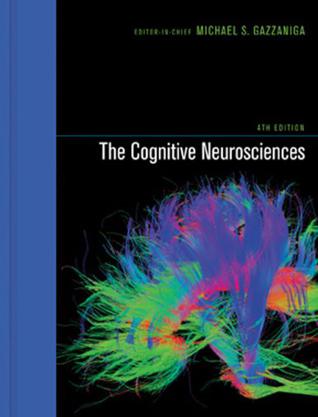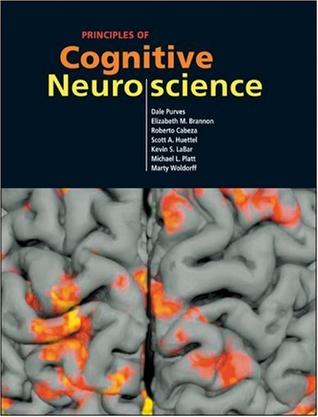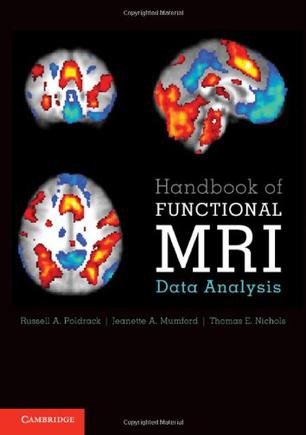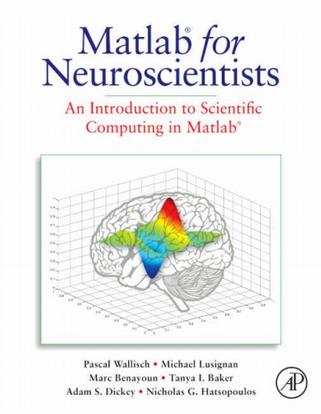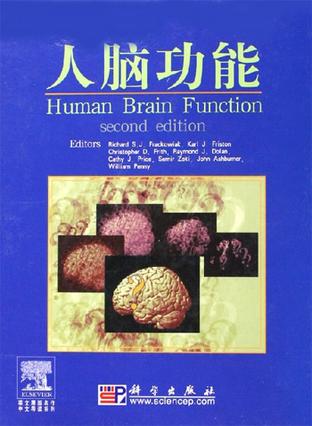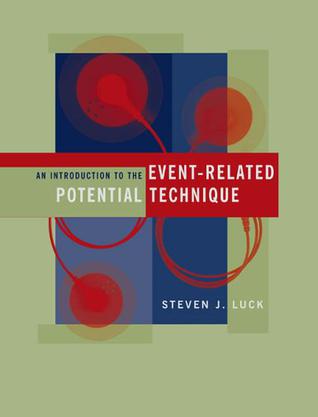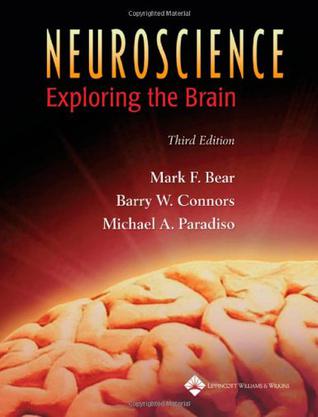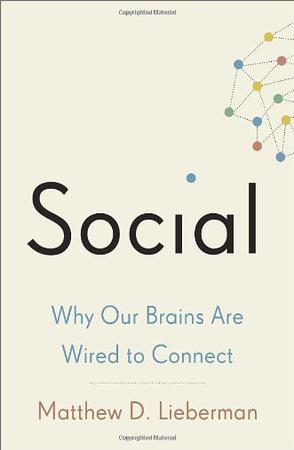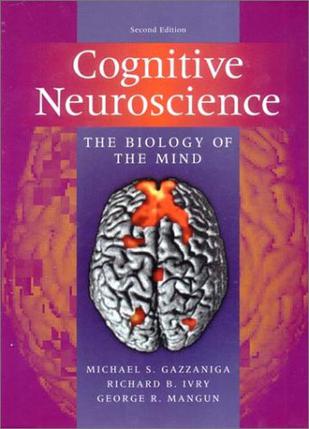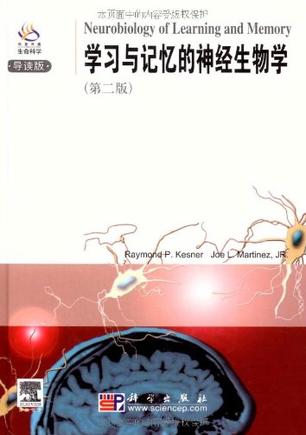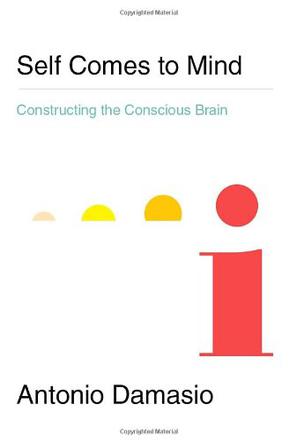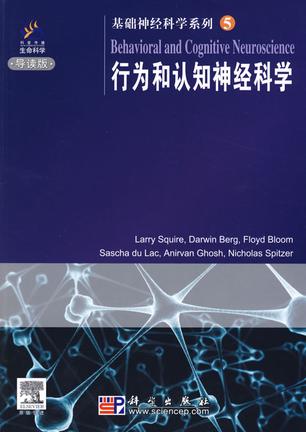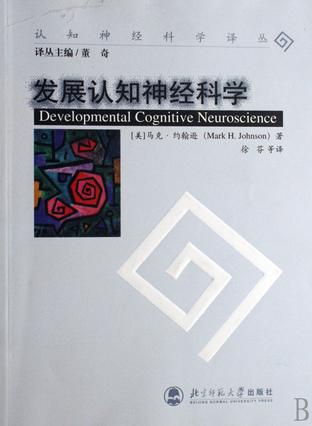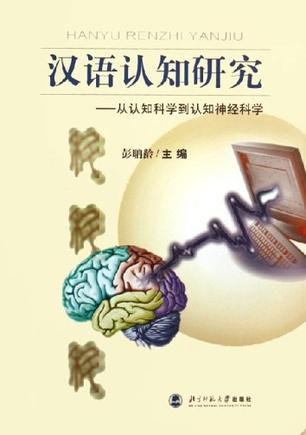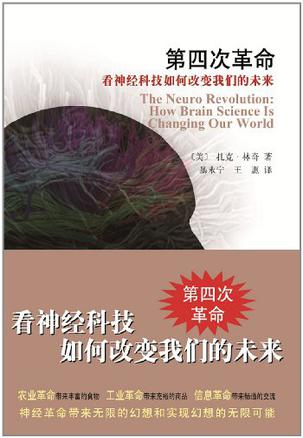欢迎来到相识电子书!
标签:认知神经科学
-
The Cognitive Neurosciences, 4th Edition
Each edition of this classic reference has proved to be a benchmark in the developing field of cognitive neuroscience. The fourth edition of The Cognitive Neurosciences continues to chart new directions in the study of the biologic underpinnings of complex cognition—the relationship between the structural and physiological mechanisms of the nervous system and the psychological reality of the mind. The material in this edition is entirely new, with all chapters written specifically for it. Since the publication of the third edition, the field of cognitive neuroscience has made rapid and dramatic advances; fundamental stances are changing and new ideas are emerging. This edition reflects the vibrancy of the field, with research in development and evolution that finds a dynamic growth pattern becoming specific and fixed, and research in plasticity that sees the neuronal systems always changing; exciting new empirical evidence on attention that also verifies many central tenets of longstanding theories; work that shows the boundaries of the motor system pushed further into cognition; memory research that, paradoxically, provides insight into how humans imagine future events; pioneering theoretical and methodological work in vision; new findings on how genes and experience shape the language faculty; new ideas about how the emotional brain develops and operates; and research on consciousness that ranges from a novel mechanism for how the brain generates the baseline activity necessary to sustain conscious experience to a bold theoretical attempt to make the problem of qualia more tractable. -
Principles of Cognitive Neuroscience
This book, written by seven leaders in the field, is intended to inform readers at all levels about the growing canon of cognitive neuroscience, and to make clear the many challenges that remain to be solved by the next generation. Chapters begin with a brief introduction and end with a summary; in addition to the narrative text, richly illustrated in full color, each chapter includes boxed material on topics of special interest. Extensive references to useful reviews, important original papers, and books are provided. In addition to an appendix that covers the essentials of neural signaling and an extensive glossary of key terms, each copy comes with Sylvius 4, which includes an interactive tutorial on human neuroanatomy and a digital atlas of human brain structure. -
Handbook of Functional MRI Data Analysis
Functional magnetic resonance imaging (fMRI) has become the most popular method for imaging brain function. Handbook of Functional MRI Data Analysis provides a comprehensive and practical introduction to the methods used for fMRI data analysis. Using minimal jargon, this book explains the concepts behind processing fMRI data, focusing on the techniques that are most commonly used in the field. This book provides background about the methods employed by common data analysis packages including FSL, SPM and AFNI. Some of the newest cutting-edge techniques, including pattern classification analysis, connectivity modeling and resting state network analysis, are also discussed. Readers of this book, whether newcomers to the field or experienced researchers, will obtain a deep and effective knowledge of how to employ fMRI analysis to ask scientific questions and become more sophisticated users of fMRI analysis software. -
Matlab for Neuroscientists
Matlab is the accepted standard for scientific computing, used globally in virtually all Neuroscience and Cognitive Psychology laboratories. For instance, SPM, the most used software for the analysis and manipulation of fMRI images in research and clinical practice is fully programmed in matlab, and its use of the possibility to allow for sophisticated software modules to be freely added to the software has established it as the by far dominant software in the field. Many universities now offer, or are beginning to offer matlab introductory courses in their neuroscience and psychology programs. Nevertheless, so far there hasn't been a textbook specific to this market, and the use of the plethora of existing engineering focused Matlab textbooks is notoriously difficult for teaching the package in those environments. This is the first comprehensive teaching resource and textbook for the teaching of Matlab in the Neurosciences and in Psychology. Matlab is unique in that it can be used to learn the entire empirical and experimental process, including stimulus generation, experimental control, data collection, data analysis and modeling. Thus a wide variety of computational problems can be addressed in a single programming environment. The idea is to empower advanced undergraduates and beginning graduate students by allowing them to design and implement their own analytical tools. As students advance in their research careers, they will have achieved the fluency required to understand and adapt more specialized tools as opposed to treating them as "black boxes". Virtually all computational approaches in the book are covered by using genuine experimental data that are either collected as part of the lab project or were collected in the labs of the authors, providing the casual student with the look and feel of real data. In some rare cases, published data from classical papers are used to illustrate important concepts, giving students a computational understanding of critically important research. The ability to effectively use computers in research is necessary in an academic environment that is increasingly focused on quantitative issues. Matlab represents an ideal language of scientific computing. It is based on powerful linear algebra structures which lend themselves to empirical problems on the one hand, while at the same time allowing the student to make rapid problem-oriented progress (particularly in terms of visualization of data points) without having to lose focus by worrying too much about memory allocation and other "plumbing" minutiae as would be required in other, more low-level programming languages such as C or C++. Currently, there are several books that provide introductions to Matlab that are either too generic and fundamental or too irrelevant for neuroscientists and cognitive psychologists who typically face a very circumscribed range of problems in data collection, data analysis and signal processing. Some non-book tutorials and primers that are in use in the community are typically out of date. Matlab versions are usually not backwards compatible. Many commands and functions used in older tutorials and primers, such as "flops" won't work in current versions of Matlab, necessitating a book that is timely and up-to-date. The complete lack of a relevant resource in this area, combined with a clearly felt need for such a text provided the primary and initial impetus for this project. The authors provide such a dearly needed resource adapting and pooling materials that developed for and used in highly rated courses involving the use of Matlab in Neuroscience at the University of Chicago. Two co-authors (PW and NH) have presented their respective work on teaching Matlab at national meetings and two of the co-authors (PW and MB) were awarded the coveted University of Chicago's Booth Prize for excellence in teaching these courses. (http://chronicle.uchicago.edu/070524/boothprize.shtml ). * The first comprehensive textbook on Matlab with a focus for its application in Neuroscience * Problem based educational approach with many examples from neuroscience and cognitive psychology using real data * Authors are award winning educators with strong teaching experience * Instructor's Website with figurebank, additional problems and examples, solutions, etc -
注意的认知神经科学研究
本书在罗跃嘉博士论文“跨感觉通路选择性注意的事件相关电位研究”基础上,系统介绍了注意的概念、认知理论,注意的蛇经解剖与生理基础;从听觉通路、视觉通路和视听跨通路的角度阐述了用认知神经科学方法研究注意的脑机制,以及对意识的初步认识与探索。本书不但总结了作者多年在注意方面的研究成果,也力图反映目前国际主义认知神经科学领域的最新进展。 -
人脑功能
《人脑功能》这部经过彻底修订的第二版《人脑功能》阐述了现代无创伤脑成像技术的理论、实践和应用方法,以及在探索正常脑和疾病脑的结构和功能中的应用。如同第一版一样,本书由功能成像实验室(Functional Imaging Laboratory, FIL)的成员所撰写,FIL是维康基金会(Wellcome Trust)资助的伦敦实验室,在过去的10年一直致力于发展脑成像技术的方法和应用。 本书由两大部分构成,第一部分介绍了感觉、认知和行动领域的人脑功能研究的进展,通过对正常功能和疾病引起的功能异常的研究,提供了人脑如何组织的相关信息。第二部分包括了相关实验设计和数据分析的理论和应用方法。通过介绍功能磁共振成像(fMRI),描述了脑成像领域的主要进展和变化,概述了整合于流行分析软件包SPM的基本原理和新内容,这其中包含了FIL国际长期合作者的贡献,他们都参与了脑成像数据分析框架的艰苦工作。 -
ERP实验教程
本书简明扼要地介绍了事件相关脑电位研究者应掌握的ERP神经电生理学基础,详细论述了ERP实验的实用知识,包括记录ERP所需的设备及其使用方法,实验准备和实验中应当注意的问题,ERP离线分析的基本方法以及目前广为采用的问题、ERP离线分析的基本方法以及目前 广为采用的各种先进的ERP分析方法和脑成像技术;最后,举例介绍了几种关于ERP研究的实验设计和结果分析。本书的内容不仅系统完整,而且实用易懂,可读性极强。本书可作为本科生,研究生的ERP实验教材,不仅适用于刚刚涉足ERP领域的读者,也适用于有多年经验的ERP研究的研究人员。 -
认知神经科学
21世纪高校心理学教材:本书系统介绍了认知神经科学研究的主要领域和研究技术。 -
Introduction to the Event-related Potential Technique
The event-related potential (ERP) technique in cognitive neuroscience allows scientists to observe human brain activity that reflects specific cognitive processes. In An Introduction to the Event-Related Potential Technique, Steve Luck offers the first comprehensive guide to the practicalities of conducting ERP experiments in cognitive neuroscience and related fields, including affective neuroscience and experimental psychopathology. The book can serve as a guide for the classroom or the laboratory and as a reference for researchers who do not conduct ERP studies themselves but need to understand and evaluate ERP experiments in the literature. It summarizes the accumulated body of ERP theory and practice, providing detailed, practical advice about how to design, conduct, and interpret ERP experiments, and presents the theoretical background needed to understand why an experiment is carried out in a particular way. Luck focuses on the most fundamental techniques, describing them as they are used in many of the world's leading ERP laboratories. These techniques reflect a long history of electrophysiological recordings and provide an excellent foundation for more advanced approaches.The book also provides advice on the key topic of how to design ERP experiments so that they will be useful in answering questions of broad scientific interest. This reflects the increasing proportion of ERP research that focuses on these broader questions rather than the "ERPology" of early studies, which concentrated primarily on ERP components and methods. Topics covered include the neural origins of ERPs, signal averaging, artifact rejection and correction, filtering, measurement and analysis, localization, and the practicalities of setting up the lab. -
Neuroscience
Widely praised for its student-friendly style and exceptional artwork and pedagogy, Neuroscience: Exploring the Brain is a leading undergraduate textbook on the biology of the brain and the systems that underlie behavior. This edition provides increased coverage of taste and smell, circadian rhythms, brain development, and developmental disorders and includes new information on molecular mechanisms and functional brain imaging. Path of Discovery boxes, written by leading researchers, highlight major current discoveries. In addition, readers will be able to assess their knowledge of neuroanatomy with the Illustrated Guide to Human Neuroanatomy, which includes a perforated self-testing workbook. This edition's robust ancillary package includes a bound-in student CD-ROM, an Instructor's Resource CD-ROM, a Connection Website, and LiveAdvise: Neuroscience online student tutoring. -
Social
We are profoundly social creatures – more than we know. In Social , renowned psychologist Matthew Lieberman explores groundbreaking research in social neuroscience revealing that our need to connect with other people is even more fundamental, more basic, than our need for food or shelter. Because of this, our brain uses its spare time to learn about the social world – other people and our relation to them. It is believed that we must commit 10,000 hours to master a skill. According to Lieberman, each of us has spent 10,000 hours learning to make sense of people and groups by the time we are ten . Social argues that our need to reach out to and connect with others is a primary driver behind our behavior. We believe that pain and pleasure alone guide our actions. Yet, new research using fMRI – including a great deal of original research conducted by Lieberman and his UCLA lab -- shows that our brains react to social pain and pleasure in much the same way as they do to physical pain and pleasure. Fortunately, the brain has evolved sophisticated mechanisms for securing our place in the social world. We have a unique ability to read other people’s minds, to figure out their hopes, fears, and motivations, allowing us to effectively coordinate our lives with one another. And our most private sense of who we are is intimately linked to the important people and groups in our lives. This wiring often leads us to restrain our selfish impulses for the greater good. These mechanisms lead to behavior that might seem irrational, but is really just the result of our deep social wiring and necessary for our success as a species. Based on the latest cutting edge research, the findings in Social have important real-world implications. Our schools and businesses, for example, attempt to minimalize social distractions. But this is exactly the wrong thing to do to encourage engagement and learning, and literally shuts down the social brain, leaving powerful neuro-cognitive resources untapped. The insights revealed in this pioneering book suggest ways to improve learning in schools, make the workplace more productive, and improve our overall well-being. -
学习与记忆的神经生物学
《学习与记忆的神经生物学(第2版)(导读版)》从多个层面介绍了对学习与记忆的研究,包括各个脑区的作用、记忆功能的调节系统,以及如何依靠研究结果解释实际问题等。涵盖了有关人类、猴子和家鼠的最新研究,讨论了不同系统之间的互作与相互影响,及通过何种手段和技术研究学习与记忆中的神经生物学。 《学习与记忆的神经生物学(第2版)(导读版)》分为三部分。第一部分包括个体发育与遗传对记忆的影响,特定基因在学习与记忆的形成、存储及提取中的功能。还覆盖了记忆的可塑性、细胞改变的电生理学、海马位置细胞与相关神经环路在学习与记忆中的功能、利用神经计算模型研究记忆加工过程、激素内分泌过程对学习与记忆的影响。第二部分讨论了神经系统在调节学习与记忆中的作用,这些章节包括内侧颞叶、额叶、杏仁核、基底神经节和小脑等脑区,对这些脑区的研究采用多种研究途径和技术手段,包括神经解剖、电生理学、损毁、药理学、功能磁共振成像、行为和认知分析技术。第三部分重点介绍了如何把前述研究的结果应用于现实生活中的实际问题。这些问题涉及奖赏与药物滥用、老龄化对记忆的影响、提升记忆的机制、以及从分子水平和治疗角度研究神经退行性疾病的重要性。 -
Self Comes to Mind
From one of the most significant neuroscientists at work today, a pathbreaking investigation of a question that has confounded philosophers, psychologists, and neuroscientists for centuries: how is consciousness created? Antonio Damasio has spent the past thirty years studying and writing about how the brain operates, and his work has garnered acclaim for its singular melding of the scientific and the humanistic. In Self Comes to Mind, he goes against the long-standing idea that consciousness is somehow separate from the body, presenting compelling new scientific evidence that consciousness—what we think of as a mind with a self—is to begin with a biological process created by a living organism. Besides the three traditional perspectives used to study the mind (the introspective, the behavioral, and the neurological), Damasio introduces an evolutionary perspective that entails a radical change in the way the history of conscious minds is viewed and told. He also advances a radical hypothesis regarding the origins and varieties of feelings, which is central to his framework for the biological construction of consciousness: feelings are grounded in a near fusion of body and brain networks, and first emerge from the historically old and humble brain stem rather than from the modern cerebral cortex. Damasio suggests that the brain’s development of a human self becomes a challenge to nature’s indifference and opens the way for the appearance of culture, a radical break in the course of evolution and the source of a new level of life regulation—sociocultural homeostasis. He leaves no doubt that the blueprint for the work-in-progress he calls sociocultural homeostasis is the genetically well-established basic homeostasis, the curator of value that has been present in simple life-forms for billions of years. Self Comes to Mind is a groundbreaking journey into the neurobiological foundations of mind and self. -
行为和认知神经科学
本书特色: 内容全面——全书共分7个部分,覆盖神经科学领域的各个方面,第三版增加了神经科学发展较快的领域,如树突的发育、化学感觉、小脑、眼动、睡眠和梦,以及意识等。 作者专业——本书由多位美国科学院院士参与,其中两位曾经担任过神经科学学会(Society for Neuroscience)的主席,由100多位神经科学家共同编著而成。 生动详实——全书包含530余幅图例和照片,便于读者理解,本书附赠光盘包含全书所有彩图。 结构新颖——为了使读者能够更好地理解文中内容和开阔视野,书内增加了大量背景性材料,于正文中用方框标出,包括重要的实验、病例、实验方法和概念等。每章末尾介绍一些有关文献和进一步阅读的补充材料,供读者学习和深入钻研。 ------- 目录 第七部分 行为和认知神经科学 第44章 人脑进化 第45章 认知发育和衰老 第46章 物体的视觉感知 第47章 空间识别 第48章 注意 第49章 学习与记忆:基础机制 第50章 学习与记忆:脑系统 第51章 语言和交流 第52章 前额叶皮层及脑功能执行 第53章 意识的神经科学 -
发展认知神经科学
《发展认知神经科学》着眼于心理发展的不同领域(如视觉、注意、客体与数字概念、社会知觉、语言与记忆等),系统运用发展心理学、神经发育以及认知神经科学的研究结果,介绍心理发展背后的脑机制问题。作者以发展心理学中“自然与使然”这个基本问题贯穿始终,根据最新的研究成果,从成熟、技能学习及交互式特异化这三种观点诠释脑发育及功能发展与心理发展之间的关系。 -
汉语认知研究
汉语认知研究:从认知科学到认知神经科学,ISBN:9787303080281,作者:彭聃龄 -
大脑总指挥:揭秘最具人性的大脑区域
大脑让人类区别于其他生物,赋予我们力量,是缩小的宇宙、未被探索的最后一块领域。本书探讨大脑中最神秘的部位、被称之为“文明的器官”、“大脑总指挥”的额叶。额叶在所有大脑结构中最具人类独特之处,是人类的内驱力、企图心、人格、决策与领导能力的安身之所,在整个大脑内执行最高级、最复杂的功能,在所有人类行为的成功与失败中扮演着关键角色。假如脑区的其他部位受损了,引起的神经疾病可能造成语言、记忆、感知或运动的丧失;然而如果受伤的是额叶的话,所丧失的不再是心智的品质,而是你的心智、你的核心、你自己!本书论及与额叶紧密关联的以下几种心理品质。 领导能力。额叶之于大脑,正如指挥家之于交响乐团、将军之于军队、CEO之于企业。 动机与驱力。额叶的一点细微损伤,会致人无情、迟钝与冷漠。 自我意识和对他人的意识。 创造力。书中将检视额叶在处理新奇事物时如何扮演关键角色。 男人与女人的差别。 社会责任。额叶定义我们是社会性动物,额叶发育不良或受损会使人缺乏社会约束,缺乏社会责任感,甚至导致犯罪。 注意力。额叶与连接其他脑区的通路的机能失常可能导致多动症。 老化与精神病。人类心智的衰退、老年痴呆与额叶相关。额叶功能的缺失,是诸如精神分裂症、强迫症之类疾病的核心。 -
神经人因学
作为一个新兴领域,神经人因学的研究正处于蓬勃发展中。本书首次将已有成果整合在一起,力图展示对人类脑功能的理解如何给人因学以启发,从而设计安全、有效、愉悦的工作场景。《神经人因学:工作中的脑》展示了神经人因学如何基于现代神经科学和人因心理学与工程学,突破标准的实验室研究,走到自然或仿自然情境中,帮助我们理解日常生活中各种复杂任务下的脑功能和行为。 本书开篇纵览了神经人因学的主要研究问题,最后一章展望了这一交叉学科的未来发展方向。中间22个章节中的每一章都探讨一个特定主题,涵盖了脑与行为研究中大量难题的科学和临床解决途径,这些问题吸引着研究者们去探索和寻求答案。神经人因学的整合需要医学、人因工程学、生理学、心理学、脑成像、公共卫生以及法律专家们集体智慧的参与,问题的解答更是需要众多相关领域的专家们共享知识、交流思想、团结协作,我们希望本书能为此略尽绵薄之力。 -
第四次革命
农业革命、工业革命、信息革命都给人类社会带来的翻天覆地的变化,那么,人类将经历的第四次革命将是什么?神经革命!在TheNeuroRevolution一书中,作者ZackLynch预言神经革命将再次颠覆人类生活、工作和娱乐。神经科技作为新的技术(如用于探究我们大脑的脑成像技术),正逐渐影响着人类生活的方方面面,包括金融、法律、政治、艺术、战争甚至宗教信仰。通过讲述引领这场神经革命的杰出人才背后的故事,作者向我们展示了这个即将到来的、让人吃惊的未来。这本书带给我们的是惊叹、是讨论,可能还有些许的惊慌失措,但这些都是我们必须要知道的,因为神经革命将改变的是我们每一个人,是整个人类的世界。
热门标签
下载排行榜
- 1 梦的解析:最佳译本
- 2 李鸿章全传
- 3 淡定的智慧
- 4 心理操控术
- 5 哈佛口才课
- 6 俗世奇人
- 7 日瓦戈医生
- 8 笑死你的逻辑学
- 9 历史老师没教过的历史
- 10 1分钟和陌生人成为朋友

